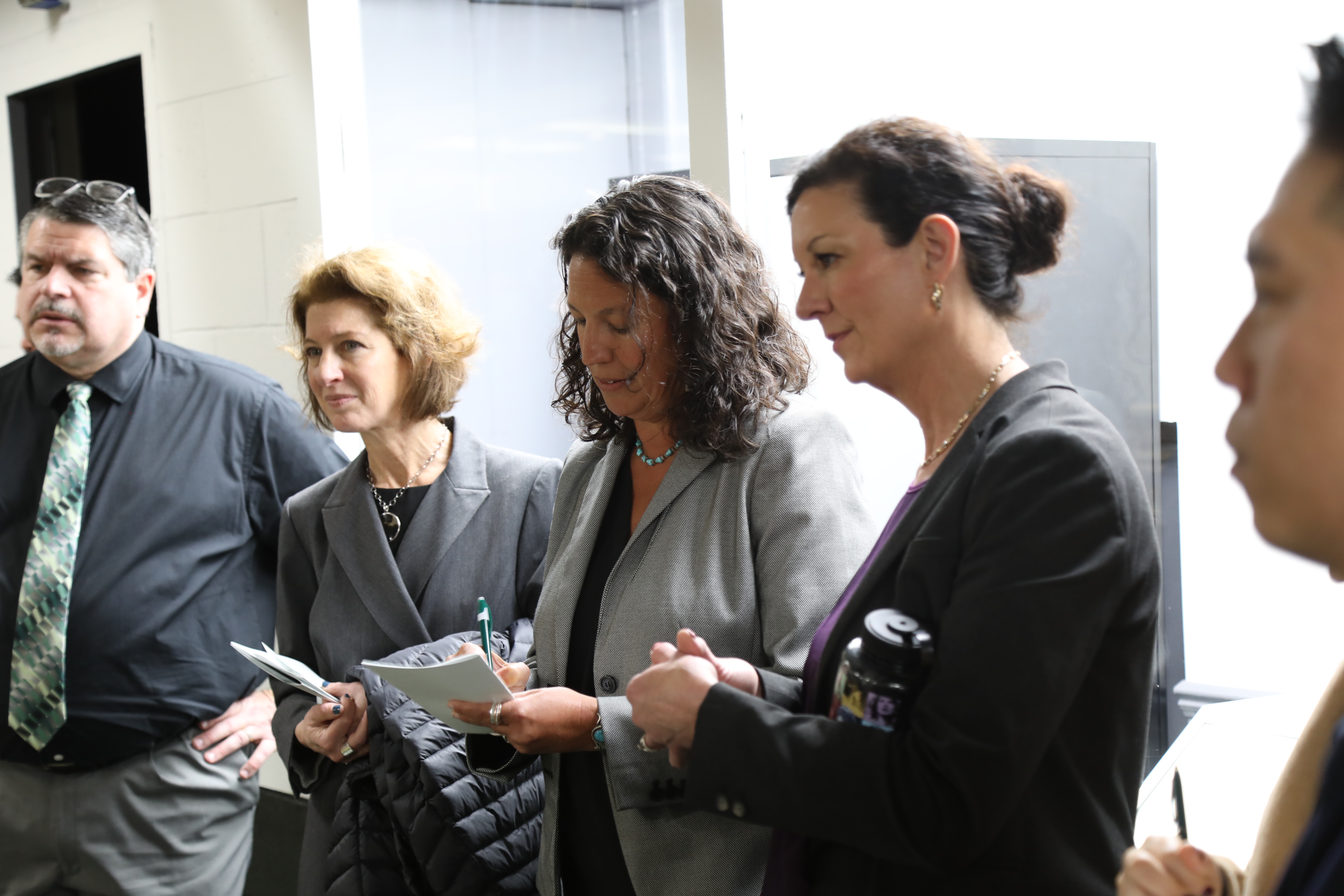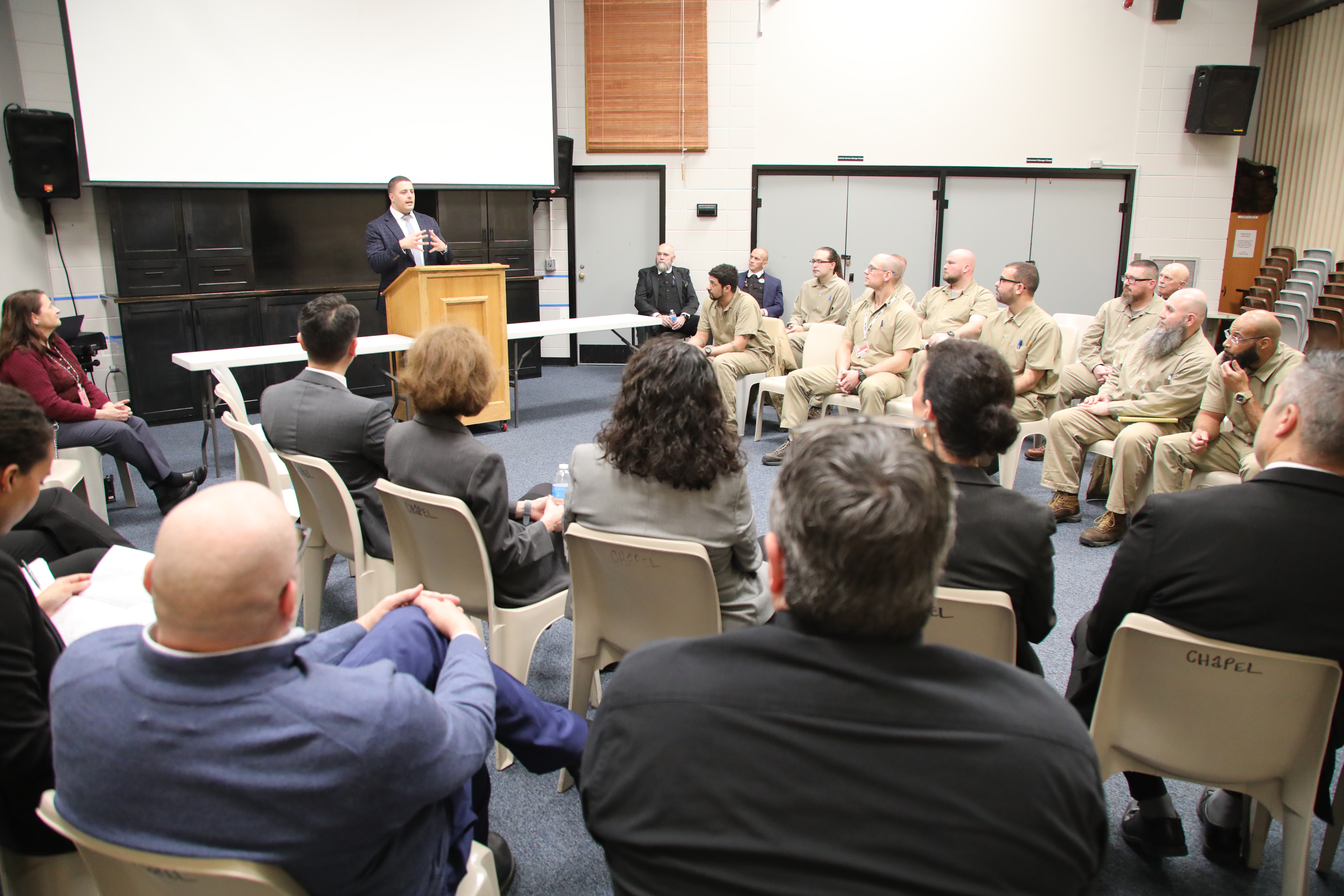The Time is Now: Seizing a Transformational Moment in Correctional Education
July 26, 2024
by Amy L. Solomon, Assistant Attorney General, Office of Justice Programs, Colette S. Peters, Director, Federal Bureau of Prisons, Amy Loyd, Assistant Secretary, Office of Career Technical and Adult Education
Inside a classroom in Milan, Michigan, several of the most prepared, inquisitive and driven students Dr. Todd Butler has ever taught are working through a complex calculus problem. As class concludes, the students exit the seminar and enter a world rife with potential pitfalls and distractions.
These students are incarcerated at FCI Milan, a low security federal correctional institution about an hour west of Detroit. And Dr. Todd Butler is Dean of Humanities and STEM at Jackson College. The college is one of several key partners that have helped FCI Milan develop a robust catalogue of educational opportunities for people incarcerated at the facility.
Earlier this year, the three of us had a chance to visit FCI Milan, along with former Jackson College student Ramsey Fakhouri. Ramsey was previously incarcerated at FCI Milan. He recounted his first class with Jackson College and how the classroom dynamic of openness and curiosity helped students start to think differently about what education meant for their future and the way they saw the world.
“The talk around FCI Milan was no longer, ‘hey did you catch the score of the game?’ It was, ‘hey, what did you get for that math problem?’” Ramsey said. “Now, there are no sections in the chow hall. Everybody’s together. White, Black, Hispanic, Native, all sitting at the same table. And you realize we all have similar interests, we all have similar likes, and we’re all trying to do better for when we go home.”
Like Ramsey, most incarcerated people return to their communities, but many do not enjoy the opportunity to pursue an education while they are incarcerated. Nearly 43,000 people were released from federal prisons and another 405,000 from state prisons in 2022, according to the Bureau of Justice Statistics. Whether they reenter their communities successfully or recidivate depends largely on the opportunities open to them during and after incarceration, none more important than education.
And right now, the hard work of so many who have fought for positive change has delivered a moment of unique opportunity in correctional education. Last summer, thanks to bipartisan legislation in Congress, eligibility was expanded so that all people in prisons and jails could receive federal Pell Grants for the first time in three decades. The FAFSA Simplification Act (FAFSA refers to the Free Application for Federal Student Aid) now allows students who are incarcerated to access federal student aid to pursue post-secondary education, something many could have only dreamed of before.
The Office of Justice Programs and the Federal Bureau of Prisons have worked alongside the Department of Education on Pell opportunities since 2016, when Jackson College and 67 other colleges across 28 states participated in Second Chance Pell. This was a pilot initiated to build evidence, demand and momentum toward full Pell reinstatement for people who are incarcerated. By 2022 Second Chance Pell had expanded to over 200 colleges and universities in 48 states, including two-dozen Historically Black Colleges and Universities and minority serving institutions.
The question is how we will build on this momentum now that Pell has been broadly reinstated. While the door has been opened to expand educational opportunities for incarcerated individuals, prisons, jails and educational institutions must step through it and build the necessary infrastructure. We have seen progress, but many institutions have been hesitant to embrace correctional education and Prison Education Programs.
It is not easy work, but examples like FCI Milan and its partners provide a roadmap. In addition to an associate degree from Jackson College, FCI Milan students can earn high school diplomas or GEDs, or take automotive technology classes.
The results have been transformational. While individuals who are incarcerated make up about 11 percent of part-time students attending Jackson College, they account for nearly 33 percent of part-time students on the Dean’s List.
And the impact of full Pell reinstatement is being felt nationally. According to a Vera Institute of Justice analysis, Pell grants were used by 17,459 incarcerated students to fund educational opportunities for Financial Aid Year 2022-23. These students collectively earned 4,068 certificates, 1,634 associate degrees and 334 bachelor’s degrees.
This most recent data bodes well for both individual opportunity and community safety. A 2013 analysis found that individuals participating in correctional education programs had 43 percent lower chance of recidivating than similar individuals who did not. The study also found the odds of obtaining employment post release were 13 percent higher for individuals enrolled in correctional education versus those who were not.
We also know kids are more likely to go to college or trade school when their parents do. A postsecondary education can create a legacy of academic participation that carries over to children and grandchildren.
While the data is impressive, it’s personal stories like Ramsey’s that bring the numbers to life and inspire students who remain incarcerated. Ramsey graduated Jackson College with three associate degrees, a certificate in management and a perfect 4.0 grade point average. He was accepted to the University of Michigan-Dearborn, and a few months into his college experience, he was elected student government president. Today, Ramsey has his bachelor’s and master’s degrees and is working toward his doctorate. He has a successful career as an automotive engineer and has started his own nonprofit to help others in need of a second chance.
“Education was the door and the avenue that opened all the opportunities in my life,” he said.
We have a chance to play a role in so many stories like Ramsey’s if we collectively seize this moment. To our partners in education and corrections: the time is right to invest in correctional education programming. Our nation’s prisons are full of individuals waiting for the opportunities they need to succeed. The ball is in our court.




